Mount Vesuvius
Steven Dutch, Professor Emeritus, Natural and Applied Sciences, University of Wisconsin - Green Bay
I've been to Naples in January 1989 and 1990, and July 2006, and to the top of Vesuviusin 1989 and 1990. The 1989 trip was on a gray and gloomy day, the 1990 trip on a bright sunny day. There's no difficulty telling which photos are from which trip.
 |
In the NASA image at left, Vesuvius is in the center with Naples
above it. At top left is the Campi Flegrei, which is underlain by an
active magma chamber. In this view, north is toward upper right.
The light areas in this picture are urbanized, suggesting the population at risk from Vesuvius. The large blue area is the Bay of Naples, which is separated from the Gulf of Salerno at lower leftt by the Sorrento Peninsula. |
 |
The NASA radar image at left shows the relief more clearly.
Vesuvius consists of an outer caldera rim called Monte Somma and the inner cone of Vesuviusproper. |
 |
Detail of Vesuviusitself (NASA). Note the outer ring, called Monte
Somma, and the inner cone of Vesuvius proper with its prominent crater.
Herculaneum is below and left of the volcano, Pompeii below and to the right. |
As if Italy didn't have enough problems then, Vesuvius erupted in 1944. By this time Naples was in Allied hands, so it was their problem. Immediately above (north of) Vesuviusis a curving gray feature, the 1944 lava flow. The flow followed the valley between Vesuviusand Monte Somma, then exited through a gap and into the suburbs of Naples.
The eruption had little impact on the war although it did teach Allied air forces a forceful lesson that volcanic ash and high precision aircraft engines don't mix. This was perhaps the first confrontation between volcanic ash and high technology and the score, as always, was ash 1, technology 0.
General Views of Vesuvius
 |
 |
 |
Above: views of Vesuviusacross the Bay of Naples
Left: view from the edge of Naples Below: views from the southwest along the VesuviusRoad |
 |
 |
 |
 |
 |
Signs in Torre del Greco, including one to Vesuvius |
 |
Vesuviusfrom the east, overlooking Pompeii |
 |
View of Vesuviusfrom the north |
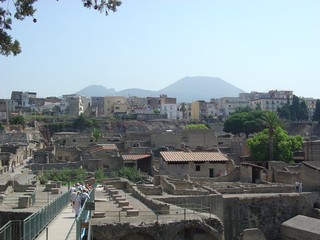 |
Views looking north toward Herculaneum and Vesuvius. Monte Somma is on the left. These and all later views in this section are from July, 2006. |
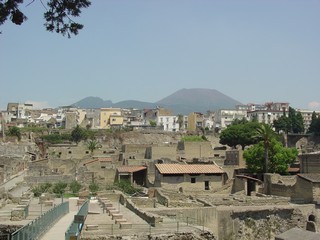 |
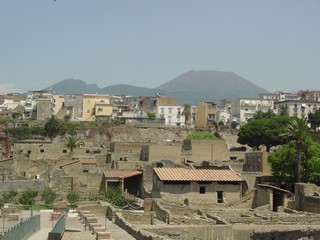 |
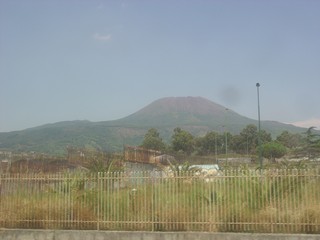 |
Left and below: Vesuviusfrom near Pompeii. Most of the former rim of Monte Somma is buried by later deposits and only the shoulder at the base of the cone hints at the former volcano. A few crags of Monte Somma just peep over the shoulder. |
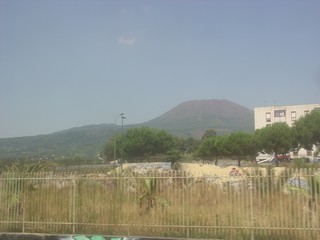 |
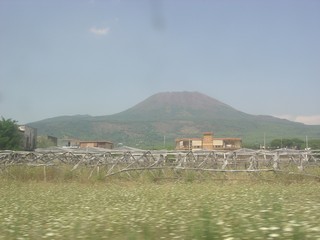 |
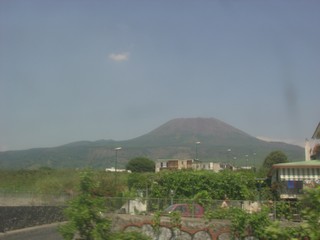 |
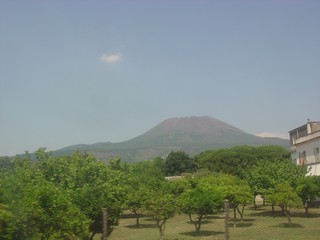 |
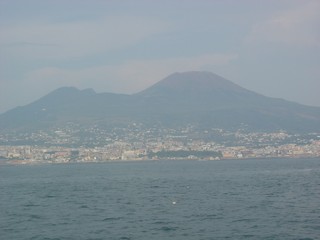 |
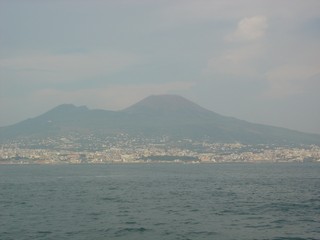 |
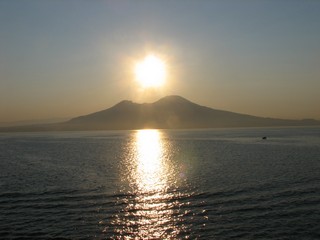 |
Above: Vesuviusfrom the hydrofoil
Left and below: views from Naples harbor. In all views, Vesuviusis the high cone on the right, Monte Somma the jagged peak on the left. |
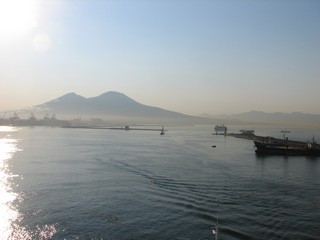 |
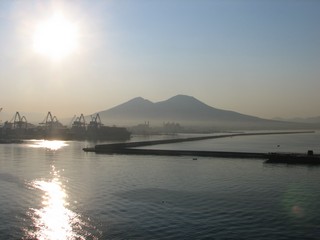 |
| Below: Vesuviusat dusk, looking appropriately sinister. | |
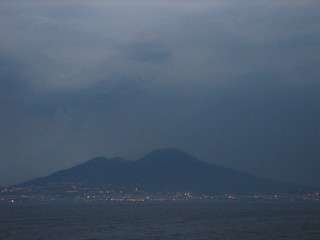 |
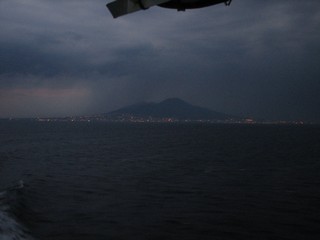 |
The 1944 Lava Flow
 |
On a dull gray day this is the most evil looking landscape imaginable. The flow poured down the flanks of Vesuviusfrom the bottom of the photo at left, then left along the valley between Vesuviusand Monte Somma. |
 |
 |
 |
 |
 |
Here the flow poured through a gap in Monte Somma and encroached on the outskirts of Naples below. |
 |
On a more cheerful day, approaching the flow area. |
 |
 |
 |
At left we see the flow coming down the base of Vesuviusfrom the right then flowing left along the valley. |
 |
At left and below are views of the flow from higher up on the summit of Vesuvius. |
 |
 |
 |
 |
 |
At left and below are views of the gap where the flow escaped into Naples. |
 |
 |
The Trail
 |
A trail ascends from the parking area to the summit. |
 |
Students silhouetted in the notch formed by the trail. |
 |
Near the summit. The gray 1944 lava flow is at lower left. |
The Crater
 |
Crater wall showing successive lava flows. Until 1944, Vesuviushad a shallow crater with a small central, perpetually steaming spatter cone. The banner of steam was a hallmark of Naples. The 1944 eruption deepened the crater and destroyed the cone. The thick light layer below the topmost dark cliff marks the 1944 crater floor. |
 |
Left and below: On gray misty days the steam vents are far more obvious. |
 |
 |
 |
 |
 |
Left and below: views of the crater walls and floor |
 |
 |
 |
 |
 |
 |
 |
 |
On the Summit
 |
Left: perils of becoming the group photographer.
Below at left, the 1989 group does the tourist thing, at right the 1990 group. These are UW-Green Bay students on a January trip abroad. |
 |
 |
 |
Misty view of the Sorrento Peninsula |
 |
Funiculi, funicula-a-a-a...
The song was actually written in 1880 to commemorate the opening of a funicular (cable) railway up Mount Vesuvius. The funicular was put out of service by a 1906 eruption, and for good by the 1944 eruption. The station shown is the chair lift that replaced the funicular. The chair lift operated from 1953 to 1984. |
Return to Virtual Field Trips Index
Return to Professor Dutch's Home Page
Created 15 March 2007, Last Update 10 June 2020